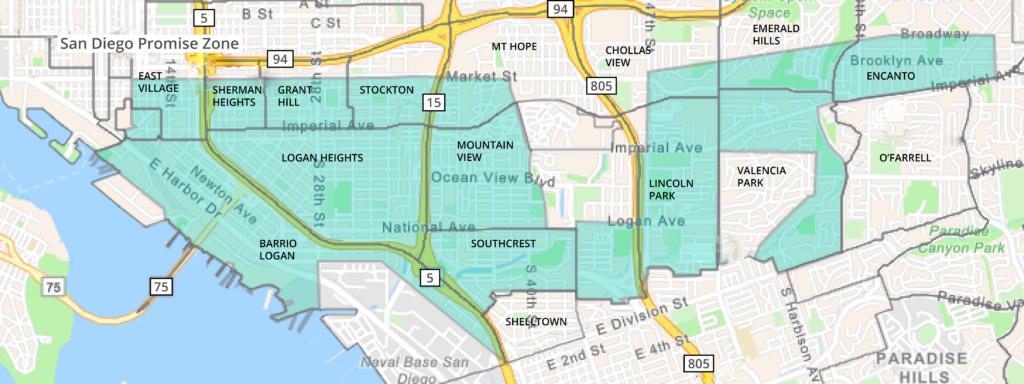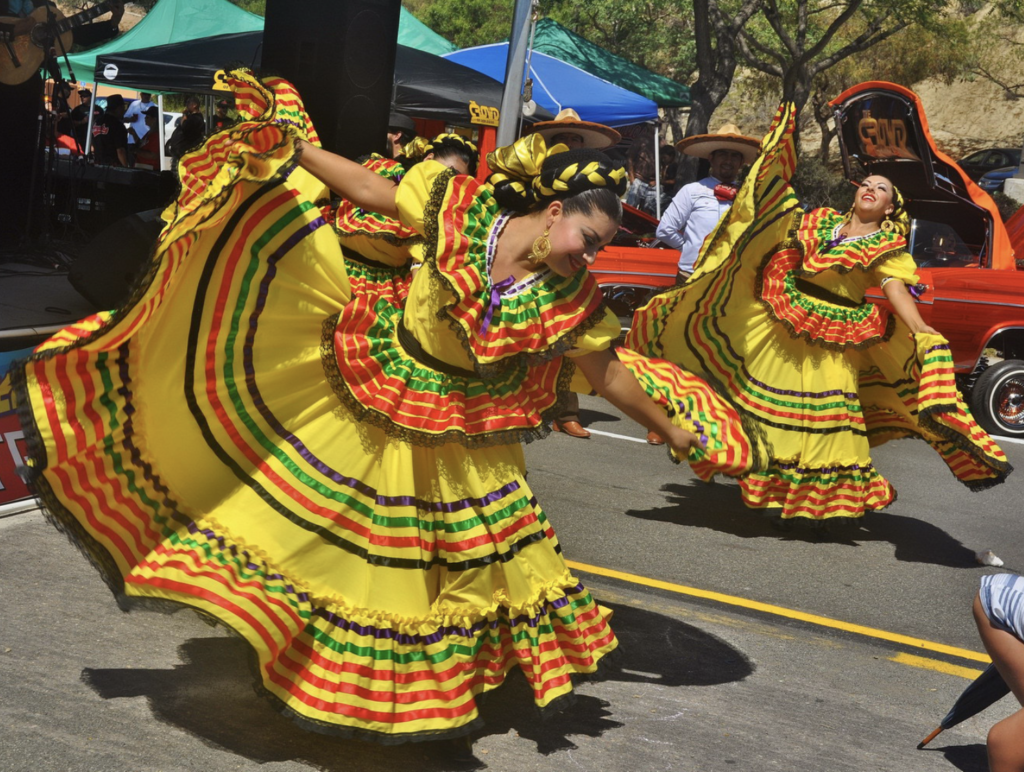The Promise Zone initiative connects local San Diego institutions to local and federal funding, staff and resources to support local San Diego leaders as they work to improve equity and access across sectors like affordable housing, workforce development and educational opportunities for some of San Diego’s most underserved communities. In an interview with The San Diego Workforce Partnership, Promise Zone manager, Xiomalys Crespo, shares how San Diegans can benefit from these initiatives while supporting their own communities.
Can you talk about some of the challenges our community faces and how you’re working to overcome them?
The City of San Diego’s federal, place-based Promise Zone designation brings together cross-sector partners in a structured way to achieve social change and bring in investment to impact more than 80,000 residents in some of the city’s most under-resourced and underserved, yet most vibrant communities. The San Diego Promise Zone (SDPZ) includes some of the zip codes most impacted by the COVID-19 pandemic—which further exacerbated existing inequities—in the County of San Diego, including Barrio Logan, Logan Heights, Southeastern, Encanto and parts of the East Village.

Over the next 5 years, Promise Zone Partners will work collaboratively to address and bridge gaps in opportunity, attainment and outcomes through six working groups, in an effort to advance the following goals:
- Increase access to quality affordable housing
- Promote access to healthcare and healthy foods
- Create jobs
- Create a priority of safety
- Improve educational opportunities
- Increase economic activity
Over the last year, the initiative has identified digital equity and inclusion as a key component of the community’s economic recovery—especially as it relates to its goals of improving educational opportunities and creating jobs. When it comes to broadband adoption rates in the Promise Zone, over 28% of residents report having no broadband internet access whatsoever (ACS 2014-18). Of equal concern, access to connected devices is also low, with 16% of households lacking any computers, and of the 84% with some sort of device. Only 18% have a smartphone or tablet, which is often not sufficient for work and school (ACS 2014-18). This means that a high portion of Promise Zone residents face challenges in accessing e-government services from their homes, participating in the civic engagement process and working remotely or engaging in distance learning, among other things.
Any partnership highlights you’d like to share?

The San Diego Promise Zone, housed under the City’s Economic Development Department, strives to create a sustainable network of collaboration that thrives beyond the life of the federal designation. The goal is to co-create an ecosystem of opportunity and investment through collaboration that addresses systemic racism and inequities to improve the quality of life of Promise Zone residents. To do this, Promise Zone is fostering partnerships with over 65 community-serving organizations, government agencies and philanthropic, corporate and educational institutions with shared goals. Implementing partners include San Diego Unified School District, Civic San Diego, the San Diego Housing Commission, the Jacobs Center for Neighborhood Innovation, the County of San Diego’s Health and Human Services Agency and the San Diego Workforce Partnership. Most, if not all, of these organizations hold leadership roles among the working groups.
The SDPZ remains very much committed to expanding the number of its partners, as well as enhancing communications and data collection to ensure that neighborhoods continue to grow and thrive. One of these partnerships was brought about in the City’s renewed 5-year corporate partnership agreement with California Coast Credit Union, which allocated $60,000 annually for 5 years to the SDPZ—and therefore the rest of the federal designation. This is the first time that a San Diego institution has provided direct funding to the initiative, which will be used to build the capacity of grass root organizations serving the community and implementing initiatives that address barriers to post-secondary education and employment.
Promise Zone input has also been key in the roll out of SD Access 4 All, supporting the City’s efforts to address digital inequity. The City Council allocated one-time funding for $500,000 in fiscal year (FY) 2021 and $450,000 in FY 2022 for internet access for low income communities. With the City’s Department of Information Technology, the Access for All Digital Working Group has expanded public wifi within the Promise Zone, specifically in Chicano Park and Euclid Avenue Station. Feedback on needs within Promise Zone communities continues to guide these efforts, in which institutions like The San Diego Futures Foundation, Pillars of the Community and mohuman, have all participated.

How can San Diegans get involved?
The San Diego Promise Zone hosts 6 working group meetings open to the public, which are outlined on our calendar here. San Diegans can also get involved by supporting the overarching priorities of the initiative to:
- Apprise policymakers at all levels of government of Promise Zone needs and initiatives to ensure coordination among agencies
- Support alignment and coordination among Promise Zone working groups to connect intersectional priorities
- Support and create opportunity for investment in the Promise Zone
- Re-Engage Partners and Raise Awareness around the Promise Zone
Why is workforce development important to your organization’s mission?
A child’s zip code should never determine their destiny. But today, the communities they grow up in impact their odds of graduating high school, their job opportunities, their health outcomes and their lifetime economic opportunities. To address this, the San Diego Promise Zone’s Create Jobs working group goals include:
- Connecting opportunity youth (youth ages 16-24 that are not in school nor working) to employment
- Increasing the number of residents employed in middle skills jobs in growing industries
- Identifying opportunities with employer institutions and championing model policies that encourage equitable practices
